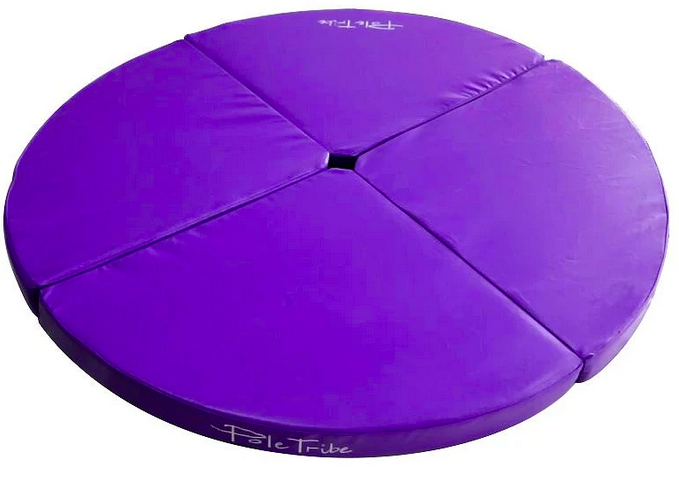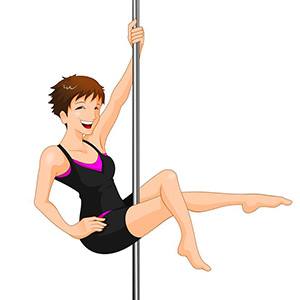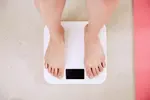- Home
- FAQ
- Pole Safety FAQ
- Pole Dance Beginner Tips for Safety
Pole Dance Beginner Tips: Start Safe, Stay Safe
If you're looking for pole dance beginner tips and are wondering what safety has to do with anything, you might be a bit confused.
Your Pole Pal knows how exciting it is when you're just getting started with pole dancing. You want to improve quickly so you can graduate to all those crazy spins, right? And you're looking for any information you can find to help you get there faster.
So it's understandable that pole safety might not be the first thing that comes to mind when you think of pole dance beginner tips. But learning the basics of pole dance safety takes very little time, and will help lay the foundation for you pole dancing journey.
Tell you what...take 5 minutes to read the beginner safety tips on this page, and then head on over to read this article that focuses on pole dance tips for beginners. That way you'll get the best of both...pole dance beginner tips and beginner's safety info too!
Please keep in mind that these pole safety tips are general in nature, and there are no guarantees that you will never suffer injury or damage if you follow them.
Only you can ensure your complete safety by correctly installing your pole, using caution and common sense, and knowing the limits of your equipment and your own body.
But as a pole dance beginner, the following safety tips are important habits to develop in order to reduce your risk of injury while pole dancing.
#1 - Wash your hands
Washing your hands before you hit the pole helps to remove lotions, creams and any natural oils on your hands. These can cause you to slip, or lose your grip entirely, so it's important to get in the habit of washing up before you touch your pole.
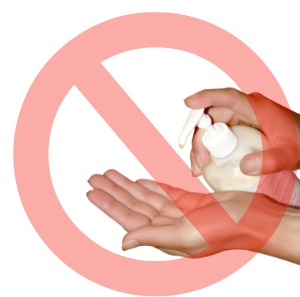
This sport definitely does not mix well with hand lotion, baby oil, or other similar substances!
BONUS - If you're sharing equipment in a class setting, frequent hand washing will also help reduce the spread of colds, flu and other bugs.
#2 - Remove Jewelry
Be sure to remove any rings, watches or other loose jewelry to protect your pole, your jewelry and yourself from injury.
Rings and watches can cause damage to your dance pole, including scratches and scrapes to the finish.
And if they're made of soft metals like gold, rings can also suffer damage, not to mention contributing to blisters and pinched skin at the base of your fingers...ouch!
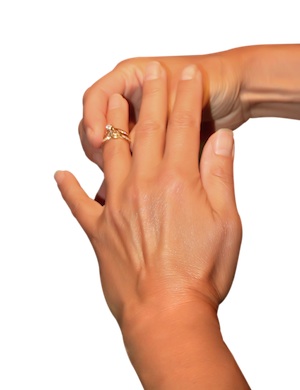
Loose jewelry such as necklaces can also become a hazard when learning spins and inversions.
At best, these can distract you as they fly about, and at worst they could become caught between you and the pole, causing you to lose your grip and fall.
For these reasons, it's best to get in the habit of removing jewelry every time you practice or work out on your dance pole.
#3 - Don't Cover Up
Avoid covering your palms with gloves or other fabrics.
While gloves marketed specifically for pole dancing may provide the grip you need for climbing safely, they will hinder your spins and other moves.
You can read more about these gloves, and why Your Pole Pal recommends only the gauntlet type that leave your palm uncovered.
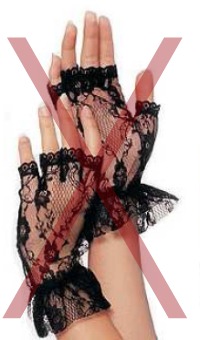
Other fabrics can be downright slick, and are best avoided if you intend to do any weight bearing or airborne moves.
Remember, injuries are inevitable if you don't have a good grip.
If you get very sweaty palms, you may wish to try out one of the popular grip products to help prevent slipping and sliding while on your pole.
#4 - Use A Spotter
Make sure you have a spotter when learning new tricks, particularly once you start to learn moves like inversions, releases and laybacks.
The risk of falling is greater, and the consequences of a fall are more serious with these types of moves, so protect yourself and practice good safety measures by having someone spot you.
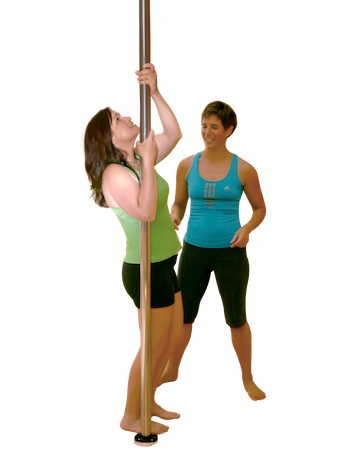
A spotter's job is to focus on you and your safety, so make sure there's someone who can give 100% of their attention to you when you practice new moves.
The spotter can also help you get your bearings and assist you in correct body placement, which can be a challenge when you're upside down!
#5 - Cushion Your Fall
Using a safety mat is a good idea when learning and practicing any new move, but especially once you graudate to spins and climbs.
Ideally, a safety mat or crash pad shouldn't take the place of a spotter, but it can definitely give you increased confidence and reduce your fear of falling.
Just in case it's ever needed, a crash pad will help soften your landing and potentially help you avoid more painful or even serious injuries.
# 6 - Safety Check, Every Time
Be sure to do regular safety checks of your dance pole, including the fittings and small parts such as cotter pins, screws, etc. The saying that "the devil is in the details" definitely applies here.
Take a few moments to do a quick safety check of your dance pole each time you use it, and you could avoid a painful accident or damage to your pole, furnishings, or your home (think steel dance pole meets picture window....ouch!.
Here's a short video that shows how to load test a friction fit or removable pole before use. If you're not sure how to test that your pole is safely installed, you might find it helpful.
Summary
If you remember only one of the safety-related pole dance beginner tips on this page, let it be this: never take your pole for granted. Do your part by followning the above suggestions, and always keep a healthy level of respect for your dance pole.
If you do so, you are much less likely to experience an injury, and more likely to enjoy this fabulously fun fitness activity!
What's New?
-
Find Colorado Pole Dancing Classes
Oct 31, 25 02:44 PM
Searching for Colorado pole dancing opportunities? Come on in and let us help you find a class near you with our free directory. -
Plus Size Dance Pole Guide - Top Poles with Higher Weight Limits
Jul 31, 25 03:03 PM
What's the best plus size dance pole? Not all poles are created equal. Find out which brands support higher weight limits, and which ones to avoid. -
Pole Dance Studios in Brazil | Global Pole Directory
Jul 26, 25 04:55 PM
Explore pole dance studios and instructors across Brazil. Find pole fitness classes for all levels and styles with the Brazil pole dancing directory. -
Pole Fitness in Hawaii | Worldwide Pole Dance Directory
Jul 14, 25 11:39 PM
Searching for pole fitness in Hawaii? Look no further! Discover pole studios and instructors across Hawaii and start your pole dance fitness adventure today! . -
London Pole Studios & More | Pole Dancing in England
Jul 13, 25 11:44 PM
Discover top pole studios in London as well as pole dancing classes throughout England. Find local studios near you to start your pole dancing adventure today.
Your Pole Pal loves to have fun, but she also has to earn a living, right? That's why you'll see ads on this site. She may also earn commissions on some of the products you'll see here, but there's never any cost to you since the advertisers pay for these.
The income generated through these means helps ensure Your Pole Pal can devote the time to providing you with all the free and fabulous information & resources you'll find on this website.
Want to learn more? Your Pole Pal invites to you read her full advertising disclosure. You know...in case you haven't read enough legalese lately.

